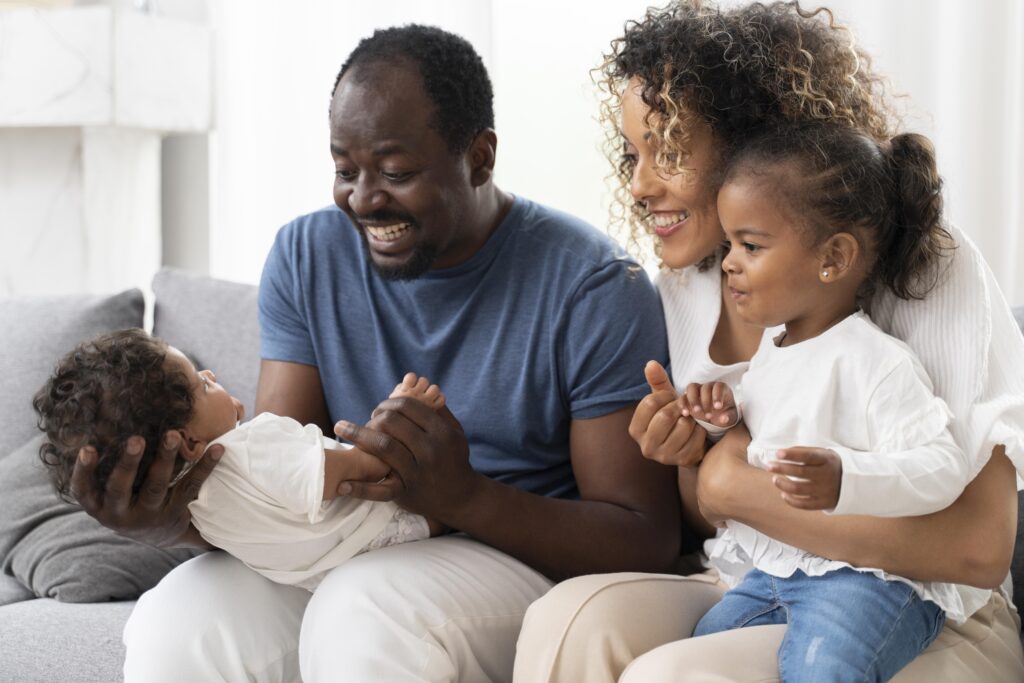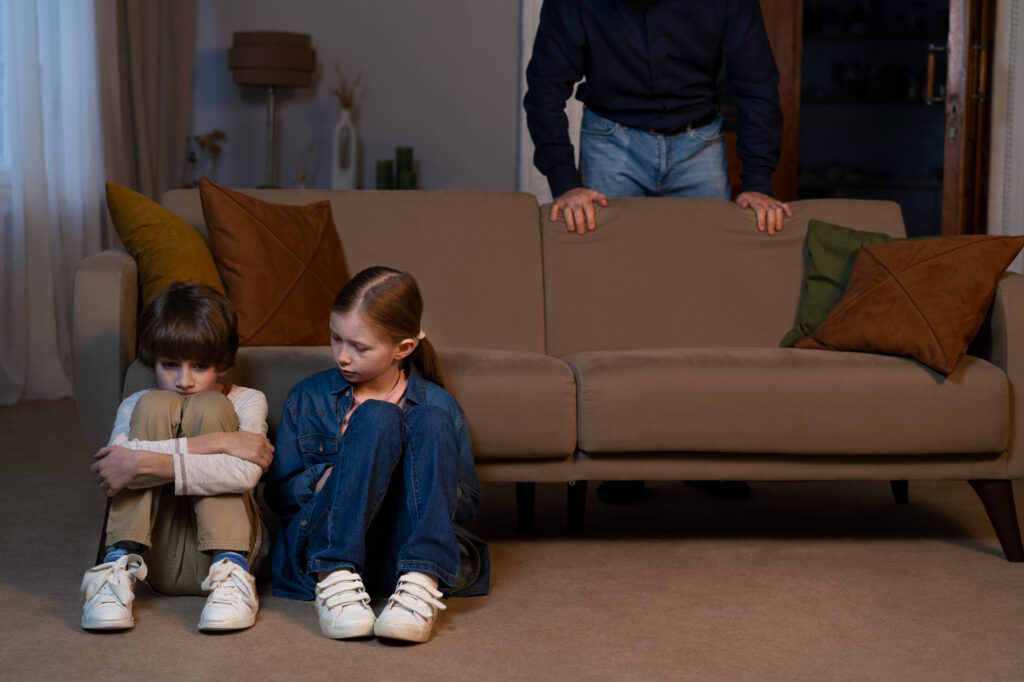The Surprising Reason Your Childhood Wasn’t the Same as Your Siblings

It’s one of the deepest and most confusing human questions: How can you and your sibling, raised in the same house by the same parents, remember your childhoods in completely different ways? One of you recalls a home of peace and support; the other recalls a home of tension and stress. It can feel like your experiences are mutually exclusive.
The assumption that “the same home” means “the same childhood” is one of the biggest myths of our lives. The truth is, no two siblings ever grow up in the same house.
This isn’t just a feeling; it’s a psychological reality. It’s time to deconstruct this paradox and understand why your family was never one single experience, but a collection of unique, individual ones.
The Core Paradox: “No Siblings Have the Same Parents”

This profound idea, captured by author and trauma expert Dr. Gabor Maté, is the key: “No siblings grow up in the same house. No siblings have the same parents. No siblings have the same family. No siblings have the same childhood.”
This isn’t a denial of biological fact. It’s a crucial distinction between a parent’s intent and a child’s experience. As Maté clarifies, it has nothing “to do with how much love a parent has for a child, but rather ‘what actually happens.'” The child doesn’t experience the parent’s abstract love; the child experiences the way the parent shows up.
Because a parent, as a changing and reacting human, can never “show up” in the exact same way for two different children born at two different times, the emotional environment for each child is, by definition, unique.
Think of it this way, as one commentary offered: “It’s like a car wreck, everyone was there but we all had a different seat in the car and the impact was different.” The family is the event, but your “seat”—your birth order, your temperament, your gender—fundamentally alters how you experience it.
You Were Raised by People in Different Seasons
The “same” parent is never the same person from one year to the next. You and your siblings were simply born into different “seasons” of your parents’ lives.
As Dr. Gabor Maté explains, “there is no way for a parent to relate to their first child the way they do their second and so on.” The first child is born to novices who are learning on the job. The second child is born to veterans. The first child has a period of undivided attention; the second is born into a pre-existing group dynamic.

But it goes deeper. As Dr. Joan K. Peters, a professor emeritus, notes, “Parents are at different stages of their lives when different children are born; even a year can produce enormous change in a person—in their career, their relationships, their marriage… their finances.”
A parent who is 28, struggling financially, and in a tense marriage will “show up” in a profoundly different way than the “same” parent at 35, who is now financially stable and in a secure relationship.
Science has a name for this mechanism: the Family Stress Model (FSM). This model shows a clear causal chain: external pressures like economic hardship create psychological distress for the parents. That distress then “spills over” into their parenting, often leading to “harsh and inconsistent parenting.”
A 10-year-old may have had their first five years in a stable home. But if a recession hits, their 5-year-old sibling will experience their entire early development in an environment defined by high stress and parental distress. Same parents, same love, but two completely different childhoods.
The Child-Driven Effect: You Weren’t the Same Child

This isn’t a one-way street. It’s not just that parents change; it’s that they respond differently to the unique, innate traits of each child.
Parents do not parent in a vacuum; they respond to the child in front of them. As Dr. Joan K. Peters explains, even if a parent’s life is stable, they “will still relate to different children differently… to their nature and behavior, whether they’re fussy or calm, smiley or serious, active or inward.” A “fussy” child will naturally evoke a different parental response than a “calm” one, creating a unique feedback loop for each.
Dr. Maté echoes this perfectly: “So, even if I could be the same parent to all my kids, which I couldn’t be, they still had three different parents because they would experience me differently.”
This lived experience is now quantified by science. A 2025 meta-analysis published in the Psychological Bulletin found that a child’s innate personality is a major predictor of how they are treated. Children who are innately more “agreeable” and “conscientious” (responsible) tend to “receive more favorable treatment,” specifically experiencing “less conflict” with their parents.
This is a classic “child-driven effect.” An “easier” child elicits more positive parenting, which reinforces that child’s personality, widening the gap between their experience and that of a more temperamentally difficult sibling.
Carving Out Your Own Identity

A huge part of your environment wasn’t just your parents—it was your siblings.
For decades, pop psychology has leaned on the “birth order” theory: firstborns are responsible, middle children are peacemakers, and lastborns are rebellious. But modern, large-scale research has largely “settled the debate” and found this to be a myth. Two definitive 2015 studies found that birth order has “little or no substantive relation to personality.”
The real mechanism is far more active and fascinating: “sibling deidentification.”
This is the “tendency for siblings to consciously or unconsciously define themselves as different from one another in order to reduce competition.” A family has limited resources—parental attention, praise, time. If an older sibling excels as the “academic one,” it’s an inefficient and high-conflict strategy for the younger sibling to compete on the same turf.
Instead, they “deidentify.” They actively “carve out unique identities” by defining themselves in opposition. They become the “athletic one,” the “artistic one,” or the “rebellious one.” Your different personalities may not have been a passive result of your birth, but an active solution to the problem of co-existing and securing your own niche.
Same Event, Different Scar

This brings us back to the car wreck analogy. How can two siblings live through the same family trauma—a death, a divorce, an illness—and emerge with completely different, life-altering narratives?
It’s because a “shared” event is never truly shared. It’s filtered through each child’s unique developmental and temperamental lens. A 2023 review on siblings and adverse childhood experiences (ACEs) confirms that even with “shared traumatic experiences,” children “can perceive the experience very differently, and their reactions are unique.” A 7-year-old has different cognitive tools to process a parent’s death than a 2-year-old.
The personal story of Dr. Joan K. Peters captures this perfectly. She and her brother lived through their father’s death from cancer. But her brother was 7; she was 2.
- Her Brother’s Experience (Age 7): His trauma was one of overwhelm. He was old enough to be a target for his parents’ pain. His dying father “asked too much of him… wanting his 7-year-old son to sit with him every day.” His grieving mother “leaned on my brother, hoping he would be her ‘little man’… pouring out her emotions to him.”
- Her Experience (Age 2): Her trauma was one of absence. She was “unable to understand what was taking place.” Her experience was of her “father disappearing into death and my mother into her anguish.”
As Peters concludes, “It was as if we didn’t have the same parents.” Her brother’s parents were “overwhelming”; hers were “elusive.” They lived in different “seats” in the car. The 7-year-old had the capacity to be burdened; the 2-year-old had only the capacity to be abandoned.
See Your Family as a Constellation

So what do you do with this? Where does this leave you and your siblings, who may still be arguing over a past that you each remember so differently?
This knowledge is not a weapon to prove who was right or wrong. It is an invitation.
It’s an invitation to see your family not as a single, uniform block, but as a “constellation” of unique, individual relationships. It’s an invitation to hold space for the profound idea that your story of your childhood is true, and your sibling’s story is also true. You were just in different seats.
This understanding is the first step toward compassion—for your parents, who were evolving humans doing the best they can, for your siblings, who were just trying to find their own niche, and for yourself.
Perhaps the most powerful step is to listen. The next time you’re with your sibling, don’t just argue over the “facts.” Ask a simple, open-ended question: “What was it like for you?”
You may find that in finally understanding their story, you unlock a new, more profound understanding of your own.
Loading...

